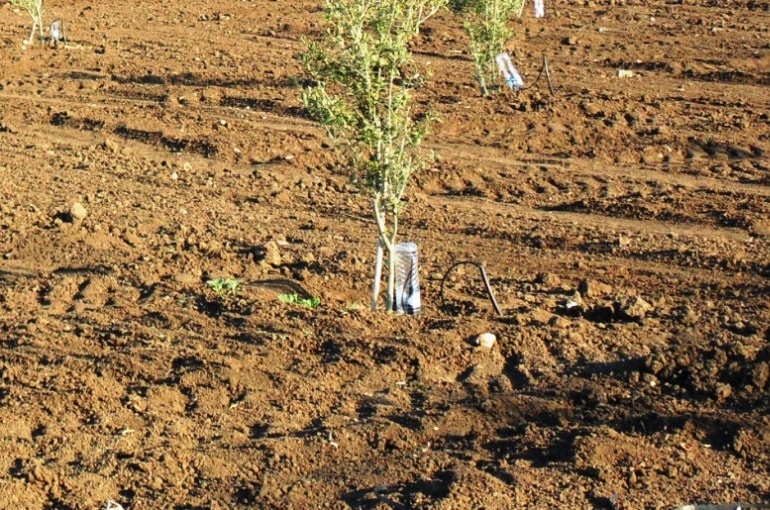Olive Tree Soil Requirements

This post is also available in:
This post is also available in:
![]() Español (Spanish)
Español (Spanish) ![]() Français (French)
Français (French) ![]() Deutsch (German)
Deutsch (German) ![]() Nederlands (Dutch)
Nederlands (Dutch) ![]() العربية (Arabic)
العربية (Arabic) ![]() Türkçe (Turkish)
Türkçe (Turkish) ![]() 简体中文 (Chinese (Simplified))
简体中文 (Chinese (Simplified)) ![]() Italiano (Italian)
Italiano (Italian) ![]() Ελληνικά (Greek)
Ελληνικά (Greek) ![]() Português (Portuguese (Brazil))
Português (Portuguese (Brazil)) ![]() polski (Polish)
polski (Polish)
The success of an olive grove depends on the natural environment, the selection of suitable field and varieties and the application of appropriate cultivation techniques.
Olive farms that are installed on flat sites and sites surrounded by hills are not only exposed to spring frosts, but also run the risk of serious frost damage during the winter. A slightly downward location, resulting in a flat surface, where the cold currents can escape easily, is a proper place to install the grove. Flat places where no frosts or cold winds are reported are also suitable. The average olive tree also needs plenty of sunlight in order to produce a good yield. It also hates excessive soil moisture. Consequently, the farmer must choose a well-drained field, where rain water cannot easily stagnate.
In order to avoid the risk of attack by various fungi on our olive grove, the soil must be kept fallow for three or four years before planting our young olive trees. Alternatively, the field can be planted with a grass mixture for a couple of years, and then cleaned. In order to install an irrigated olive grove on uneven ground, the latter must first be leveled. The leveling takes place before the deep plowing. The deep plowing of 20 inches (45-50 cm) aims mainly at destroying perennial weeds and soil fluffing, which contributes to better development of the root system of trees. Before plowing however, it is good to make a basic soil analysis, and depending on its results, specify the type and quantity of basic chemical fertilizers needed to improve soil (ask a licensed agronomist). In many cases, farmers add 20 to 30 tons of manure per hectare. Keep in mind that 1 ton = 1000 kg = 2.200 lbs. and 1 hectare = 2,47 acres = 10.000 square meters.
You can enrich this article by leaving a comment or photo of your olive farm’s soil.
1.) Olive Tree Information & Uses
3.) Are Olive Farms profitable?
4.) Olive Tree Alternate Bearing
5.) Olive Tree Propagation & Pollination
6.) Olive Tree Climate – Temperature Requirements
7.) Olive Tree Soil Requirements
9.) Olive Tree Fertilizer Requirements
10.) Olive Tree Water Requirements
13.) Olive Trees Diseases and Pests
Do you have experience in Olive Tree cultivation? Please share your experience, methods and practices in the comments below. All the content you add will be soon reviewed by our agronomists. Once approved, it will be added to Wikifarmer.com and it will influence positively thousands of new and experienced farmers across the world.








































































